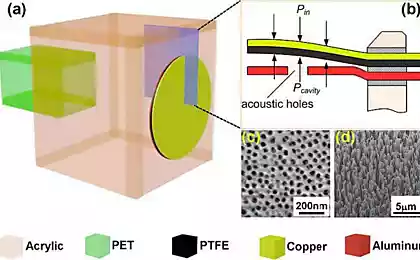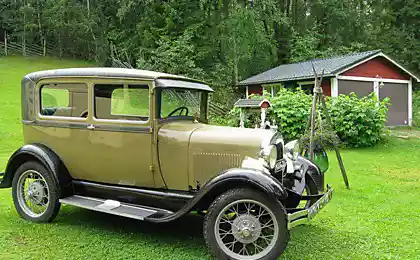806
The vital difference. ABS brakes and without
The idea of writing this story was born after a recent trip to the country. Before "house in the village" - a couple of kilometers of gravel road. Habitual short but tough movement upsetting the car brakes - check the clutch of summer tires on small roller-stones. And I understand that there is no brakes!
Of course, they were even working, but they are all the time "prevented» ABS. To prevent the wheels from locking on slippery gravel, she kept weakened "grip" slides. Familiar story! But for all of you? Experienced drivers about the perfidy of gravel roads know many newcomers, alas, no. Look at the traffic police reports how many messages the summer on gravel paths, where the reason of the wording "lost control"! Again, it is not accidental in neighboring Lithuania on gravel roads speed limit is 70 km / h ...
So be it, call me Captain Obvious, but I torment her, and not just the technique to demonstrate than the gravel surface is different from the asphalt. And (even for myself) I try to figure out whether to disable the ABS least in specific driving conditions.
15 photos, 6 videos, via.
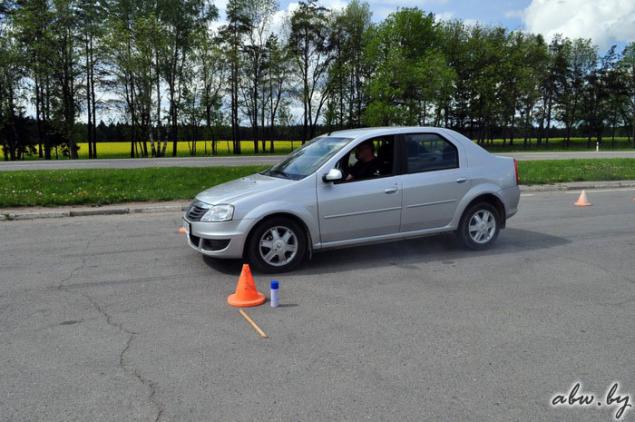
Dry, clean, predictable
Let's start with the "base" - will hold a series of braking on asphalt with and without ABS. The initial speed of the "city" of 60 km / h, then the emergency brake at rectilinear movement to a complete stop - the driver has abruptly brake pedal and hold it up to the "finish line." What will be the stopping distance?
Speaking of terms. It is understood that the braking distance is only one of the three components of stopping distance - the distance the vehicle travels from the time of detection by the driver of danger until it stops. Stopping distance also includes the distance traveled by the vehicle during the driver's reaction and response time of the braking system
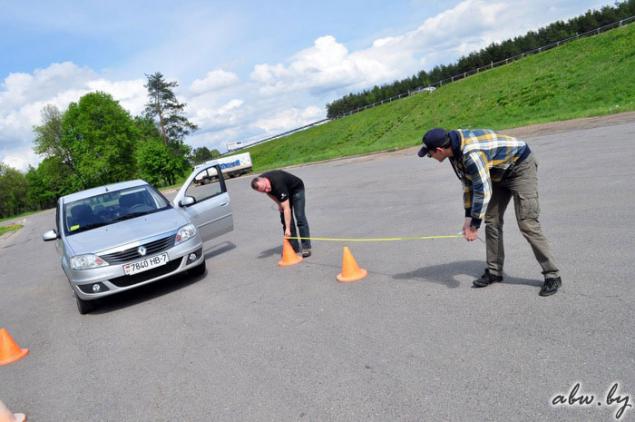
In other words, the braking process is preceded by two phases: the reaction of the driver (on the assessment of the situation, decision making and action - pressing the brake - depending on the condition of the driver training and goes from 0, 2 to 1, 2 seconds, but it is usually used in the calculations 0 8 seconds) and the response time of the brake system (0, 2 seconds). That is, before the car starts to slow down, for about a second, he will be moving at the original speed. At 60 km / h is 16, 7 meters
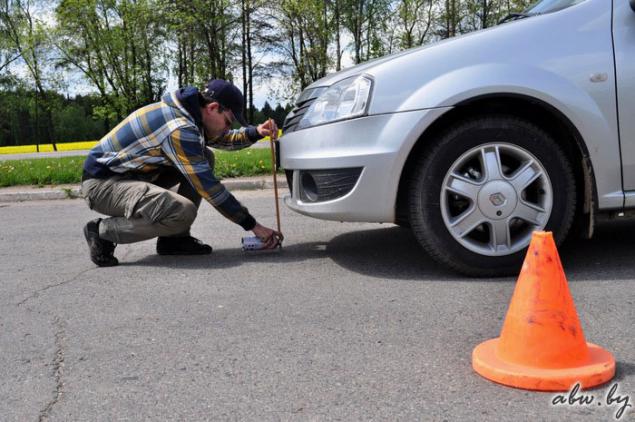
We have the same car stops just 10 meters after the control zone because our driver was ready to brake and tried to start it in the same spot. However, "as in a drugstore" still did not work, the driver does not fail me to express.

"It is a great error," - lamented Pavel Kozlovsky, who has extensive experience in tire tests and accustomed to using precise measurements without "interference". We agree: "inconsistency" of the order of 10-20 cm (or 2.1%), and this is enough to fit into it the results shown in two cars. Besides that, "shod" they are different tires (at Renault - Amtel, at Chevrolet - «Belshina»), ABS configured differently, and Logan also equipped with brake assist AFU: sharp pressure on the brake pedal, he sees as the need for emergency braking and automatically increases the pressure in the system.
However, our goal is not a direct comparison of systems or tires so "average" result, that is the average of several attempts, we will arrange. So, remember: on an emergency stop of the car with a speed of 60 km / h requires about 10 meters.
If no ABS? Turning off the fuses and make measurements using the same procedure: acceleration to 60 km / h, a blow to the brake pedal - and hold it up to a full stop. Winning only one - now we can clearly see the braking distance. All the rest - in the negative: tires suffer, winning the race no. Partly also because of the fact that at some point in the locked wheels car breaks down in the slide - the "breakdown" prevents quenching speed, not to mention the fact that the car is at that moment becomes unmanageable.
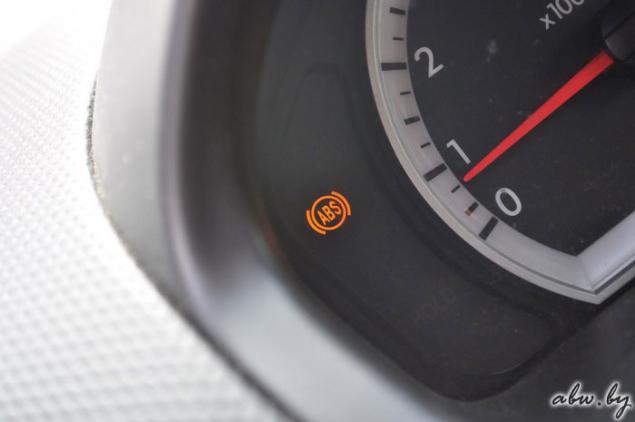
And if the wheel lock pressure on the brake pedal to reduce - to use intermittent braking? The result will not be stable and will depend largely on the skill of the driver. But the high-ABS easy to beat even the ace. As on today's cars already drive pedal does not have the information content, which was in the old car, because the brake system "sharpened" by the use of ABS.
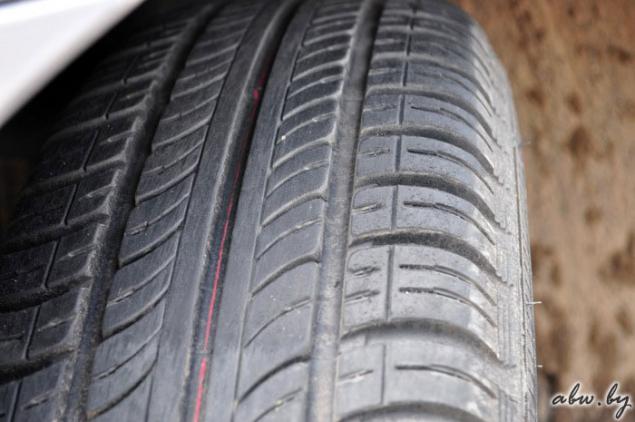
What is the result? The same 10 meters with that same few percent error. But noted that the results of braking with ABS were much more stable. And we know that the anti-lock system allows not only to slow down, but also to maneuver. So on dry pavement braking with ABS is much better quality.
Dangerous "surprise»
And if sprinkled with asphalt sand? Dirty traces of trucks on city roads or farm machinery on country highway is not such a rarity. How will behave in the car under braking if the wheels fall on such "mixed»?

He will slip! At the first braking without ABS Chevrolet flew as much as four meters further, stopping distance has increased by 40%! Despite the fact that "traces" we unrolled by just 1, 5 meters.
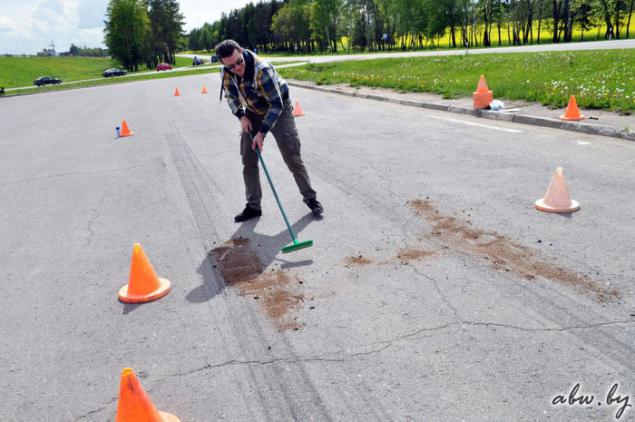
Reduce the layer of sand, remove large stones - so it will be closer to reality. But the "flight" still is about two meters (+ 20%)!

What's wrong with ABS, without it falling on the sand, the car "floats" over the asphalt - the wheels hooked not for that! Again the machine at this point is almost unmanageable. Be arc instead of straight-line motion, in addition to problems with the braking driver would get first demolition, then a skid with a very unpredictable consequences.
The conclusions are obvious. Sand on the road can greatly increase stopping distance. But it is important to add that no matter the car is equipped with anti-lock brakes or not. However, there is one fundamental but: after the car back on the pavement, ABS will provide further braking without locking the wheels - lower risk of violations of exchange rate stability. So in this case, under the control of electronic braking systems is preferable.

Gravel trap
Do not get enough traction, the wheels tend to lock. But if the charge of ABS, it is "dissolve" the brakes. Yes, the braking distance may increase, but control of the vehicle will be stored. As we have seen, on a tenacious coating is not terrible: with ABS braking is even more stable. But what if the gravel under the wheels or primer?
The same 60 km / h initial velocity, hit the brakes, but the car continues to roll - it's ABS prevents wheel lock, which because of the "slippery slope" summer tire tread does not catch hold. Result - 25 meters, that is 2 5 times greater than the asphalt!
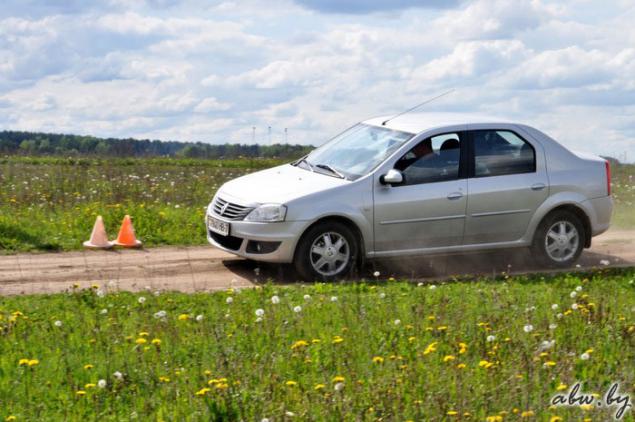
And if you press the brake pedal is "softer", so as not to bring to the operation of the anti-lock system and not to force the fire Brake Assist? At a certain skill, balancing on the verge of locking wheels, you can achieve better slow down - in one of the "sighting" attempts failed to stop for a good half meter before! But other attempts to brake path is longer than when the ABS. So, this option would have to dismiss the slowdown control both unstable.
Again, take out the fuse, depriving insuring the vehicle electronics. Acceleration, braking - this time the car stops faster! The second attempt, the third ... So it is: Now you want to stop nearly 19, 5 meters! Here is the way the wheels lock: tread "bites" into the coating, remove the top layer of gravel and pushing it ahead, creating thrust wedge. The same thing happens in the snow. The result - albeit significantly reduced braking.
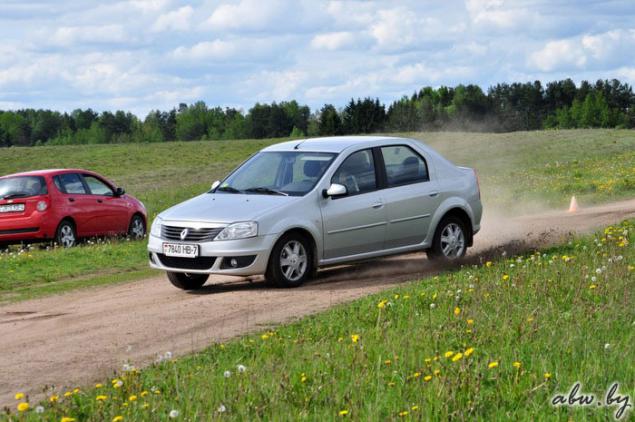
Does this mean that when driving on gravel or snow is better to disable the ABS? No! After all, when braking with locked wheels, we still get almost twice the stopping distance. And while more will struggle with the emerging drifts - at such irregular linkage coatings are inevitable
A drifts as simply turns on the gravel, very insidious. It is on the asphalt to make the rear axle slide still have to try. A gravel enough "gape" in the long corners or prevent "provocation" (as such may simply be sloppy handling of the wheel or "gas"), and the car smoothly at first, then speed will start to rotate around its vertical axis - this is start skidding! And then it all depends on the skill of the driver and elementary luck.
If the worst scenario, the car will go into a rhythmic skid, and then fly out of the road. You can go into the ditch, and the demolition of the front axle - when trying to pass a turn faster than possible. And then write reports traffic police "off the road on the rounded ...»
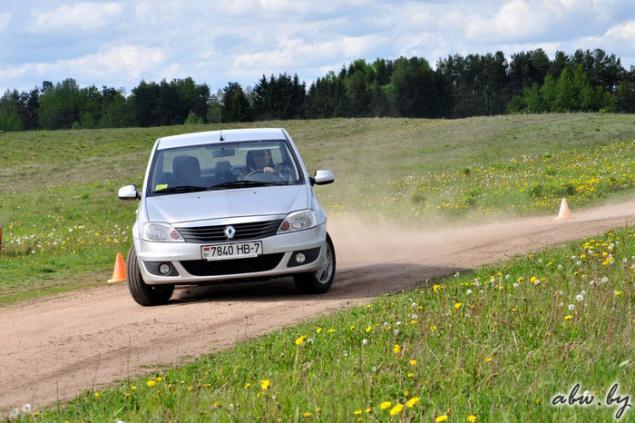
Verdict on abw.by
Displaying more. The first is better with ABS, always! Yes, that whatever is said "pro." Suppose that in some circumstances hard braking with locking wheels provides shorter braking distances, but it can also provoke and destabilize the vehicle, especially if under the wheels of "mixed" or there is a movement along an arc. Braking with ABS more "stable": the result is less dependent on the skill of the driver, allowing it to retain control of the vehicle and not to fight Gone-drifts.
The second conclusion: even a small strip of sand on the pavement threatens to turn into extra meters when braking and on gravel braking distance and did increase by several times! Add to this a greater tendency to demolish the car and drift - get very difficult and sometimes treacherous coating many comparable with snow. And if so, then speed, and driving techniques should be used appropriate.
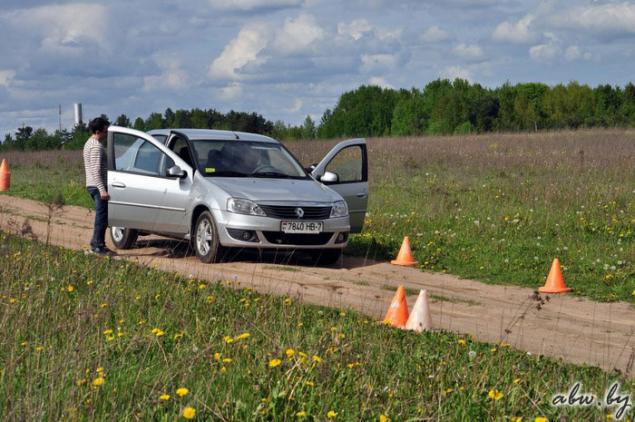
"Everyone knows, but few people know how ...»
Do you know what is most important in inhibiting? Reflexes. Only they can fully exploit the potential of the brake system and do not make mistakes.
Electronic systems that help keep the vehicle under control in almost all situations, professionals and drivers contemptuously called "collars" - they say, do not give anything, constantly interfering in the process slows down, pulls ... But the professionals and the drivers, "rolled-in" and who can ready at any time to correct his mistake, what they turned out to help over the years and constantly coached reflexes. And all the others?
"Theorists" now a lot. Having read on the Internet, behold clips and believe that everything is able. And in practice? Open mouth, horror in his eyes and trembling in his legs, does not allow to push the brake pedal to the floor as it should be. You think, Brake Assist accident appeared? How whim marketers? On the contrary, it is the wish of engineers, because analyzing the accident, they realized that in most cases the brake pedal just not compressed to the end ... scared driver, he shocked, seconds count - think someone is able to understand at this point, what it does? Here for this and came up with Brake Assist, so he replaced the missing you jerk. And it is in principle the best solution for most drivers - electronics will do everything for you, and, as shown by our tests on any surface.
With regard to braking without ABS ... Pro intermittent braking everyone knows, but few people know how to do things right at least on an empty site. And when you fly into the rear bumper was a car? Recognize and correct the error can probably unit. And then, if you have the time. For example, when the brake from 100 km / h, and there is still 50 meters, someone can get a little pedal is released. And if the 60 km / h and in front of you all of 15 meters? I assure you, not every pro deal with it - it requires a reflex, not just knowledge.
That is why, as soon as the wheels is something more slippery than dry clean asphalt, the problems begin. When emergency braking is difficult to dose the effort and if the coating is non-uniform, if not impossible. This means that you will slow down or "skid" with no chance to overtake the obstacle, or too much fan the brakes by increasing brake way ... to make things right, effectively slowing down or blocking the wheels, only after numerous workouts.
So if you want to improve your driving skills, the method of "learn, learn and learn again" should be supplemented by practice. Extensive practice to work out every reflex. Which, perhaps one day save you in an emergency situation ...
Pavel Kozlovsky ©
ABW.BY
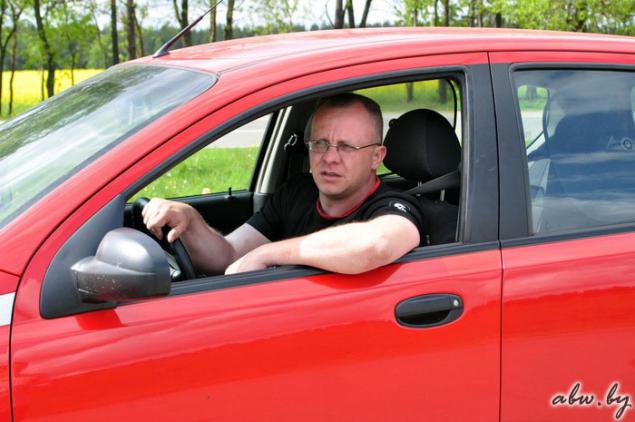
Of course, they were even working, but they are all the time "prevented» ABS. To prevent the wheels from locking on slippery gravel, she kept weakened "grip" slides. Familiar story! But for all of you? Experienced drivers about the perfidy of gravel roads know many newcomers, alas, no. Look at the traffic police reports how many messages the summer on gravel paths, where the reason of the wording "lost control"! Again, it is not accidental in neighboring Lithuania on gravel roads speed limit is 70 km / h ...
So be it, call me Captain Obvious, but I torment her, and not just the technique to demonstrate than the gravel surface is different from the asphalt. And (even for myself) I try to figure out whether to disable the ABS least in specific driving conditions.
15 photos, 6 videos, via.

Dry, clean, predictable
Let's start with the "base" - will hold a series of braking on asphalt with and without ABS. The initial speed of the "city" of 60 km / h, then the emergency brake at rectilinear movement to a complete stop - the driver has abruptly brake pedal and hold it up to the "finish line." What will be the stopping distance?
Speaking of terms. It is understood that the braking distance is only one of the three components of stopping distance - the distance the vehicle travels from the time of detection by the driver of danger until it stops. Stopping distance also includes the distance traveled by the vehicle during the driver's reaction and response time of the braking system

In other words, the braking process is preceded by two phases: the reaction of the driver (on the assessment of the situation, decision making and action - pressing the brake - depending on the condition of the driver training and goes from 0, 2 to 1, 2 seconds, but it is usually used in the calculations 0 8 seconds) and the response time of the brake system (0, 2 seconds). That is, before the car starts to slow down, for about a second, he will be moving at the original speed. At 60 km / h is 16, 7 meters

We have the same car stops just 10 meters after the control zone because our driver was ready to brake and tried to start it in the same spot. However, "as in a drugstore" still did not work, the driver does not fail me to express.

"It is a great error," - lamented Pavel Kozlovsky, who has extensive experience in tire tests and accustomed to using precise measurements without "interference". We agree: "inconsistency" of the order of 10-20 cm (or 2.1%), and this is enough to fit into it the results shown in two cars. Besides that, "shod" they are different tires (at Renault - Amtel, at Chevrolet - «Belshina»), ABS configured differently, and Logan also equipped with brake assist AFU: sharp pressure on the brake pedal, he sees as the need for emergency braking and automatically increases the pressure in the system.
However, our goal is not a direct comparison of systems or tires so "average" result, that is the average of several attempts, we will arrange. So, remember: on an emergency stop of the car with a speed of 60 km / h requires about 10 meters.
If no ABS? Turning off the fuses and make measurements using the same procedure: acceleration to 60 km / h, a blow to the brake pedal - and hold it up to a full stop. Winning only one - now we can clearly see the braking distance. All the rest - in the negative: tires suffer, winning the race no. Partly also because of the fact that at some point in the locked wheels car breaks down in the slide - the "breakdown" prevents quenching speed, not to mention the fact that the car is at that moment becomes unmanageable.

And if the wheel lock pressure on the brake pedal to reduce - to use intermittent braking? The result will not be stable and will depend largely on the skill of the driver. But the high-ABS easy to beat even the ace. As on today's cars already drive pedal does not have the information content, which was in the old car, because the brake system "sharpened" by the use of ABS.

What is the result? The same 10 meters with that same few percent error. But noted that the results of braking with ABS were much more stable. And we know that the anti-lock system allows not only to slow down, but also to maneuver. So on dry pavement braking with ABS is much better quality.
Dangerous "surprise»
And if sprinkled with asphalt sand? Dirty traces of trucks on city roads or farm machinery on country highway is not such a rarity. How will behave in the car under braking if the wheels fall on such "mixed»?

He will slip! At the first braking without ABS Chevrolet flew as much as four meters further, stopping distance has increased by 40%! Despite the fact that "traces" we unrolled by just 1, 5 meters.

Reduce the layer of sand, remove large stones - so it will be closer to reality. But the "flight" still is about two meters (+ 20%)!

What's wrong with ABS, without it falling on the sand, the car "floats" over the asphalt - the wheels hooked not for that! Again the machine at this point is almost unmanageable. Be arc instead of straight-line motion, in addition to problems with the braking driver would get first demolition, then a skid with a very unpredictable consequences.
The conclusions are obvious. Sand on the road can greatly increase stopping distance. But it is important to add that no matter the car is equipped with anti-lock brakes or not. However, there is one fundamental but: after the car back on the pavement, ABS will provide further braking without locking the wheels - lower risk of violations of exchange rate stability. So in this case, under the control of electronic braking systems is preferable.

Gravel trap
Do not get enough traction, the wheels tend to lock. But if the charge of ABS, it is "dissolve" the brakes. Yes, the braking distance may increase, but control of the vehicle will be stored. As we have seen, on a tenacious coating is not terrible: with ABS braking is even more stable. But what if the gravel under the wheels or primer?
The same 60 km / h initial velocity, hit the brakes, but the car continues to roll - it's ABS prevents wheel lock, which because of the "slippery slope" summer tire tread does not catch hold. Result - 25 meters, that is 2 5 times greater than the asphalt!

And if you press the brake pedal is "softer", so as not to bring to the operation of the anti-lock system and not to force the fire Brake Assist? At a certain skill, balancing on the verge of locking wheels, you can achieve better slow down - in one of the "sighting" attempts failed to stop for a good half meter before! But other attempts to brake path is longer than when the ABS. So, this option would have to dismiss the slowdown control both unstable.
Again, take out the fuse, depriving insuring the vehicle electronics. Acceleration, braking - this time the car stops faster! The second attempt, the third ... So it is: Now you want to stop nearly 19, 5 meters! Here is the way the wheels lock: tread "bites" into the coating, remove the top layer of gravel and pushing it ahead, creating thrust wedge. The same thing happens in the snow. The result - albeit significantly reduced braking.

Does this mean that when driving on gravel or snow is better to disable the ABS? No! After all, when braking with locked wheels, we still get almost twice the stopping distance. And while more will struggle with the emerging drifts - at such irregular linkage coatings are inevitable
A drifts as simply turns on the gravel, very insidious. It is on the asphalt to make the rear axle slide still have to try. A gravel enough "gape" in the long corners or prevent "provocation" (as such may simply be sloppy handling of the wheel or "gas"), and the car smoothly at first, then speed will start to rotate around its vertical axis - this is start skidding! And then it all depends on the skill of the driver and elementary luck.
If the worst scenario, the car will go into a rhythmic skid, and then fly out of the road. You can go into the ditch, and the demolition of the front axle - when trying to pass a turn faster than possible. And then write reports traffic police "off the road on the rounded ...»

Verdict on abw.by
Displaying more. The first is better with ABS, always! Yes, that whatever is said "pro." Suppose that in some circumstances hard braking with locking wheels provides shorter braking distances, but it can also provoke and destabilize the vehicle, especially if under the wheels of "mixed" or there is a movement along an arc. Braking with ABS more "stable": the result is less dependent on the skill of the driver, allowing it to retain control of the vehicle and not to fight Gone-drifts.
The second conclusion: even a small strip of sand on the pavement threatens to turn into extra meters when braking and on gravel braking distance and did increase by several times! Add to this a greater tendency to demolish the car and drift - get very difficult and sometimes treacherous coating many comparable with snow. And if so, then speed, and driving techniques should be used appropriate.

"Everyone knows, but few people know how ...»
Do you know what is most important in inhibiting? Reflexes. Only they can fully exploit the potential of the brake system and do not make mistakes.
Electronic systems that help keep the vehicle under control in almost all situations, professionals and drivers contemptuously called "collars" - they say, do not give anything, constantly interfering in the process slows down, pulls ... But the professionals and the drivers, "rolled-in" and who can ready at any time to correct his mistake, what they turned out to help over the years and constantly coached reflexes. And all the others?
"Theorists" now a lot. Having read on the Internet, behold clips and believe that everything is able. And in practice? Open mouth, horror in his eyes and trembling in his legs, does not allow to push the brake pedal to the floor as it should be. You think, Brake Assist accident appeared? How whim marketers? On the contrary, it is the wish of engineers, because analyzing the accident, they realized that in most cases the brake pedal just not compressed to the end ... scared driver, he shocked, seconds count - think someone is able to understand at this point, what it does? Here for this and came up with Brake Assist, so he replaced the missing you jerk. And it is in principle the best solution for most drivers - electronics will do everything for you, and, as shown by our tests on any surface.
With regard to braking without ABS ... Pro intermittent braking everyone knows, but few people know how to do things right at least on an empty site. And when you fly into the rear bumper was a car? Recognize and correct the error can probably unit. And then, if you have the time. For example, when the brake from 100 km / h, and there is still 50 meters, someone can get a little pedal is released. And if the 60 km / h and in front of you all of 15 meters? I assure you, not every pro deal with it - it requires a reflex, not just knowledge.
That is why, as soon as the wheels is something more slippery than dry clean asphalt, the problems begin. When emergency braking is difficult to dose the effort and if the coating is non-uniform, if not impossible. This means that you will slow down or "skid" with no chance to overtake the obstacle, or too much fan the brakes by increasing brake way ... to make things right, effectively slowing down or blocking the wheels, only after numerous workouts.
So if you want to improve your driving skills, the method of "learn, learn and learn again" should be supplemented by practice. Extensive practice to work out every reflex. Which, perhaps one day save you in an emergency situation ...
Pavel Kozlovsky ©
ABW.BY















